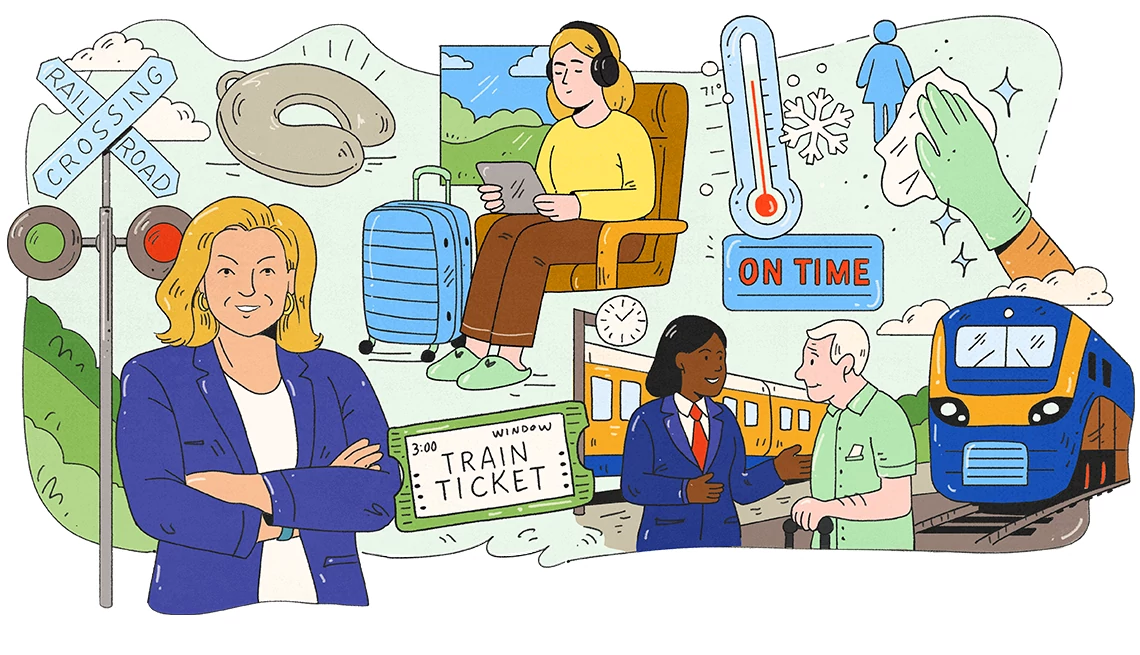AARP Hearing Center
Even as Job Searches Grow More Challenging, Financial Pressures are Pushing Some Retirees to Return to Work
By Jennifer Schramm, Rebecca Perron, November 21, 2025 12:50 PM

A range of employment indicators has revealed a mixed picture of the US labor market in recent months. While some of the latest data give room for optimism about job growth in some industries, many industries continue to shed jobs. Many older workers are employed in the industries and occupations where job cuts are ongoing, and new AARP Research survey data show that workers ages 50 and older are also concerned about their ability to find employment should they lose their current job. Meanwhile, financial need, especially the need to pay for basic necessities, is keeping many older workers on the job beyond their planned retirement age and is even pulling some retirees back into the labor force.
While the release of US Bureau of Labor Statistics (BLS) jobs data was paused due to the government shutdown, monthly data leading up to the closure showed a notable decline in hiring. Once the government reopened, the BLS September employment report showed that the economy lost 4,000 jobs in August after revisions. Though the August decline continued a slowdown trend of previous summer months, the BLS report also showed an increase of 119,000 jobs in September. While private payroll data from ADP initially showed a decrease of 32,000 private-sector jobs in September, marking one of the worst months since the pandemic, its October report showed a gain of 42,000 jobs. ADP also revised its September job decline data by 3,000 jobs to 29,000, easing some fears of a sharp labor market slowdown. Meanwhile, recruiting and consulting firm Challenger, Gray & Christmas found that US employers made 153,074 job cuts in October. This was up 175% from the 55,597 cuts announced in October 2024 and 183% from the 54,064 job cuts announced in the previous month. Altogether, Challenger, Gray & Christmas found that year-to-date job cuts are at the highest level since 2020.
Many older workers are employed in industries currently experiencing job slowdowns
Many of the industries that have lost jobs so far in 2025 employ either high numbers or a high share of older workers. A recent AARP paper shows that men ages 50 and older are most likely to work in professional and business services, manufacturing, mining, and construction. Notable job losses in the professional and business services industry in recent months include widespread layoffs at high-profile tech firms as companies restructure and leverage AI applications for many tasks, and within financial firms due to rising market volatility and economic uncertainty. Meanwhile, in September, manufacturing jobs declined for the fifth consecutive month, though the construction industry added jobs after three previous months of job losses.
Women ages 50 and older are most likely to work in the health care industry, which has so far remained a reliable area of job growth in 2025. However, job growth has slowed in other industries employing significant numbers or shares of older women, including professional and business services, educational services, and retail.
Compared to other age groups, older workers – both men and women – are also more likely to work in the public service industry, which has also seen widespread job loss in 2025, with many government jobs being eliminated and further job cuts possible before the year’s end.
Financial pressures are pushing some retirees back into the workforce
While an increasing number of older workers may be facing greater uncertainty and job insecurity, rising living costs compel many to keep working. These costs are even pulling some retirees back into the labor force. A new AARP Research survey shows that paying for basic expenses is the number one reason (39%) older adults say they continue to work or search for a job—far ahead of enjoying the job/working (13%), saving more for retirement (8%), and maintaining health insurance coverage (7%).
The survey also finds that 6% of retirees have returned to the labor market in the past six months — mainly pulled back into work by financial pressures. Fifty-nine percent of these “unretirees” say they work because they need money or their economic outlook is poor.
The findings indicate that older workers with lower levels of educational attainment may face the greatest challenges. Adults aged 50 and older without a high school diploma and high school graduates are more likely than those with a college degree to say they could never retire due to insufficient retirement savings. They are also more likely to say they need to work to pay for basic necessities — yet they are less likely to be working than their college-educated counterparts. Moreover, retirees with less education are more likely to cite the development of a chronic health condition or disability as the reason for not working and for being unable to find a new job. These workers may be more likely to work in physically demanding jobs that carry a greater risk of injury and disability or are otherwise more difficult to sustain at older ages, and that are often low-paying, making it more challenging to save for retirement.
Older workers are pessimistic about finding new jobs, most commonly due to age discrimination
Most of the older workers surveyed say they would expect a tough job search if they were to seek employment now. Two-thirds (65%) believe it would be difficult for them to find a job in today’s market, including 31% who say it would be very difficult.
Older workers typically experience longer periods of unemployment compared to younger workers. This may be one reason why many say they would expect a difficult job search in the current economic environment. But even more importantly, older workers perceive age discrimination as the number one barrier to finding work. Among respondents who believe finding a job would be difficult, one-third (34%) blame age discrimination as the reason for their anticipated difficulty. This is by far the most common response. The second-most cited reason is health issues or a disability (24%); indeed, the onset of a chronic health condition or disability is the top reason older workers said they left the labor force sooner than expected. While some workers with disabilities could continue working if they had access to more flexible work arrangements or remote work options, such opportunities may be harder to find in the current labor market.
Overall, the findings suggest that many older jobseekers currently face challenging conditions in their job searches. Despite the growing difficulties jobseekers of all ages may be experiencing, the financial imperative to work remains high, even for many workers who are already beyond the age at which they hoped to retire.
For more jobs data: Follow the latest AARP Research on work and jobs and access employment data in the AARP Public Policy Institute's (PPI) Employment Data Digest, PPI's monthly review of job trends for those ages 55 and over. Visit the AARP website's work and jobs section for articles on work and unemployment and job search resources. Visit the lifelong learning section for education resources and research.

































































